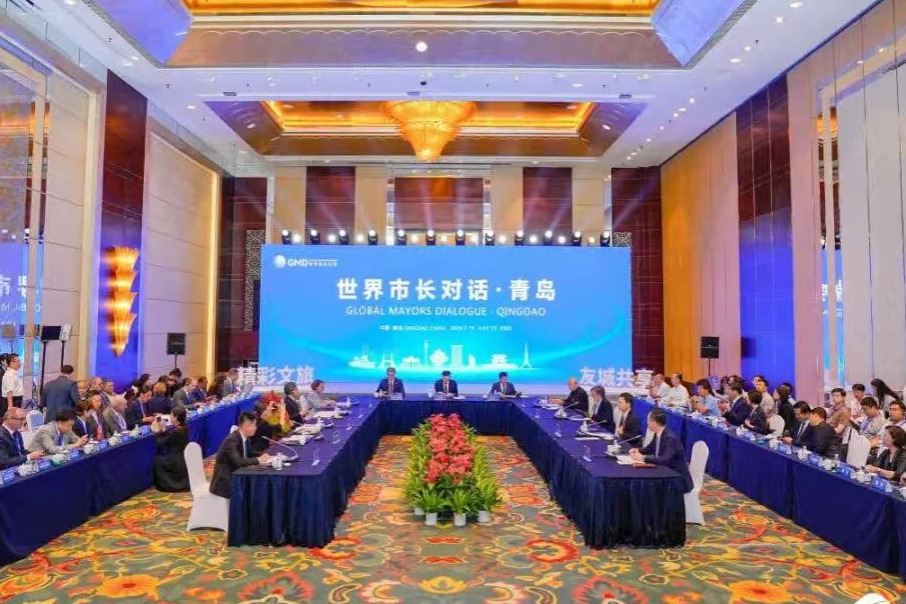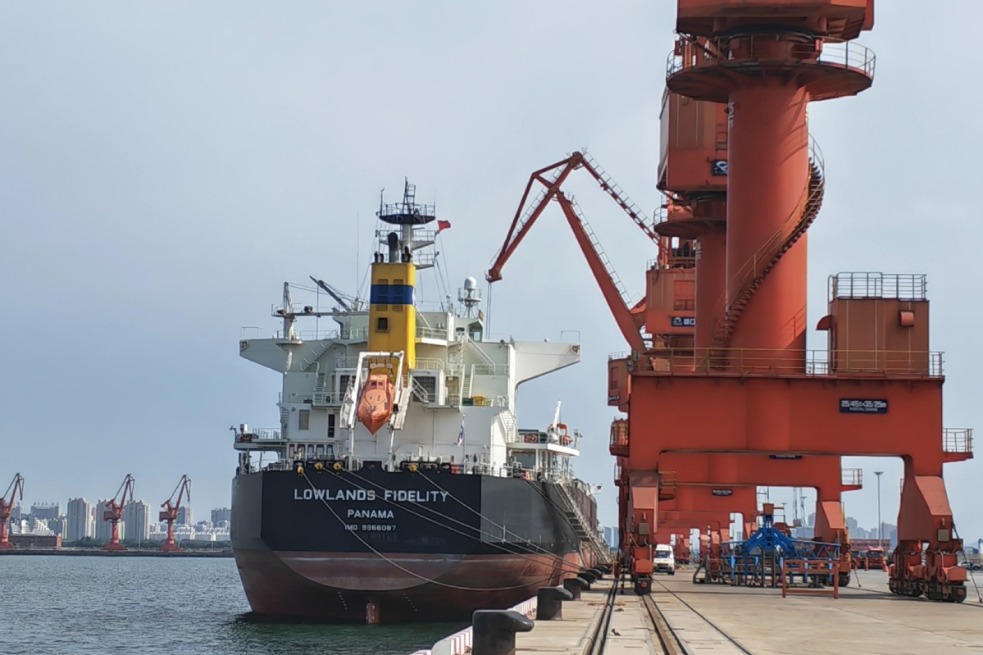Response mechanisms
'China-ASEAN+' minilaterals could shape a more effective security order for the Asia-Pacific


The Asia-Pacific region has long been the theater for power plays on the world stage. It was once dubbed the hotbed of rising nationalism in defiance of colonialism after World War II as it saw the emergence of many new sovereign states. Since then, it has evolved into a region of dynamic economic growth defined by multilateral cooperation and provides a success model for regional economic integration.
Yet, beyond the robust trade, the unsettled overlapping territorial claims in the South China Sea and the East China Sea remain potential powder kegs in the region. The saber-rattling of warships on the high seas purportedly in defense of "freedom of navigation "reminds the world of the intensifying great-power rivalry across in disputed waters.
The South China Sea disputes have consistently been made the convenient justification for the so-called Freedom of Navigation Operations (FONOPs) that purportedly aim to uphold the principle of freedom of navigation and overflight, as recognized under international law, particularly the United Nations Convention on the Law of the Sea. That being said, the truth remains that navigational rights and freedom of access to overflights over the disputed waters have never been denied or impeded by the contending parties, albeit the disputes linger on.
The assertion of such uncontended rights by the United States-led West through FONOPs in the name of supporting a free and open "Indo-Pacific" is nothing but a lame justification for non-stakeholders to contest and interfere in the overlapping territorial claims and maritime entitlements in the region. The provocative acts are visibly targeting China. Despite its rhetoric of upholding a rules-based order, the US has never been a party to the United Nations Convention on the Law of the Sea.
What appears more baffling than ever before is the recent calls by the Donald Trump administration for countries in Asia-Pacific, notably its allies, to increase their military spending to 5 percent of their respective GDP. At the recent Shangri-La Dialogue, US Defense Secretary Pete Hegseth minced no words in making such demands purportedly to reorient "toward deterring aggression by China". The message he conveyed is unambiguously provocative, way beyond the limit of strategic deterrence that the Pentagon has been espousing.
The new Pentagon chief's condescending spiel sounds more like promoting the interests of the US military-industrial-complex than addressing the security concerns in the region. In pushing 5 percent of GDP across the board, the Trump administration might not be aware that such a quantum leap of military spending for allies is tantamount to diverting resources these countries need to improve their critical infrastructure and the well-being of their people. After all, the defense budget hike demanded by the Trump administration merely serves the purpose of stifling China's rise to preserve the hegemonic interest of the US primacy.
It is burdensome for the region, particularly when the Asia-Pacific is navigating a wide gamut of non-traditional insecurities with limited resources of wherewithal and expertise. Rising security risks, ranging from food and energy security to public health crises, the climate exigency, cross-border terrorism, illicit drugs and human trafficking — to cite just a few — are now ringing the alarm for timely intervention from stakeholders, though the construction of a viable security architecture for the region is yet to be seen.
In this regard the 10 member states of the Association of Southeast Asian Nations alongside its eight dialogue partners are not short of mechanisms for multilateral cooperation and engagement.
Under the framework of ASEAN Centrality, the ASEAN Regional Forum and ASEAN Defense Ministers' Meeting-Plus are ready platforms for regional engagement on traditional security concerns.
More specifically, the enduring China-ASEAN partnership which forms the backbone of China-ASEAN economic cooperation could also be extended to cover more dimensions of collaboration. Alongside the Belt and Road Initiative, Chinese global initiatives that are dedicated to spearheading sustainable development and addressing security concerns, namely the Global Development Initiative and the Global Security Initiative make ideal tools for ASEAN and its dialogue partners to navigate the pressing challenges.
The bloc's predicament lies in its straddling the Sino-US face-off. It is no secret that ASEAN embraces Beijing in pursuit of its collective economic interests. China has been the top trading partner of ASEAN since 2009, while both have been each other's largest trading partner since 2020. Yet, the US, being widely viewed as the traditional security provider across the Asia-Pacific, still bafflingly captures the imagination of certain state actors in ASEAN, who call for the renewed military presence of Washington in the neighborhood to counter the "growing military clout" of China.
Such a juxtaposition doesn't bode well for ASEAN in nurturing ties with its top trading partner as the move itself is antithetical to trust-building.
Of all its official dialogue partners, ASEAN has the most number of mechanisms of cooperation with China, which account for almost 20 percent of the total collaborative frameworks that ASEAN has with its 11 official dialogue partners over the years.
In this context, any misgiving within ASEAN against purported over-dependency on China for fear of invoking the wrath of the US-led West is absolutely unnecessary, if not over-cautious. The US, being the comprehensive strategic partner of ASEAN, has all the necessary convenience to reach out to ASEAN for deeper collaboration.
In mitigating the arising security concerns, Washington appears more inclined to foster defence-oriented minilaterals comprising "like-minded" countries, a euphemism for ideologically-friendly countries from the Western perspective, in the Asia-Pacific. Minilateral groupings such as the Quadrilateral Security Dialogue (Quad) and the AUKUS trilateral security partnership among the US, the United Kingdom and Australia are the clear footprints of Washington in beefing up its strategic deterrence architecture in the region.
Both the US-led minilaterals, alongside the trilaterals and bilaterals involving its allies such as Japan, Australia, India and the Philippines, serve the purpose of safeguarding the US' interests in the Asia-Pacific by targeting China. None of these endeavors was commissioned to address the collective existential insecurities of the region.
In the case of China-ASEAN partnership, more minilaterals similar to the China-driven Mekong-Lancang Cooperation could be commissioned to address the various exigencies. Alongside China, ASEAN member states with shared priorities could seek to coalesce in pursuit of concerted strategies for mitigating the rising insecurities. This leaves no room for any individual member state with a self-centered agenda, or that is yet to be ready to embark on the initiative, to stall the entire endeavor.
Under such circumstances, China can partner with ASEAN member states and others with shared priorities, through minilaterals in its bid to navigate the common security challenges. These would provide a good platform for China to prove the worth of its Global Security Initiative, which needs to be better understood by stakeholder countries in the region. Alongside this, minilaterals would also act as cradles for nurturing political trust, which will diminish suspicion and help endear China to its neighbors.

The author is president of Belt and Road Initiative Caucus for Asia Pacific. The author contributed this article to China Watch, a think tank powered by China Daily.
Contact the editor at editor@chinawatch.cn.
































